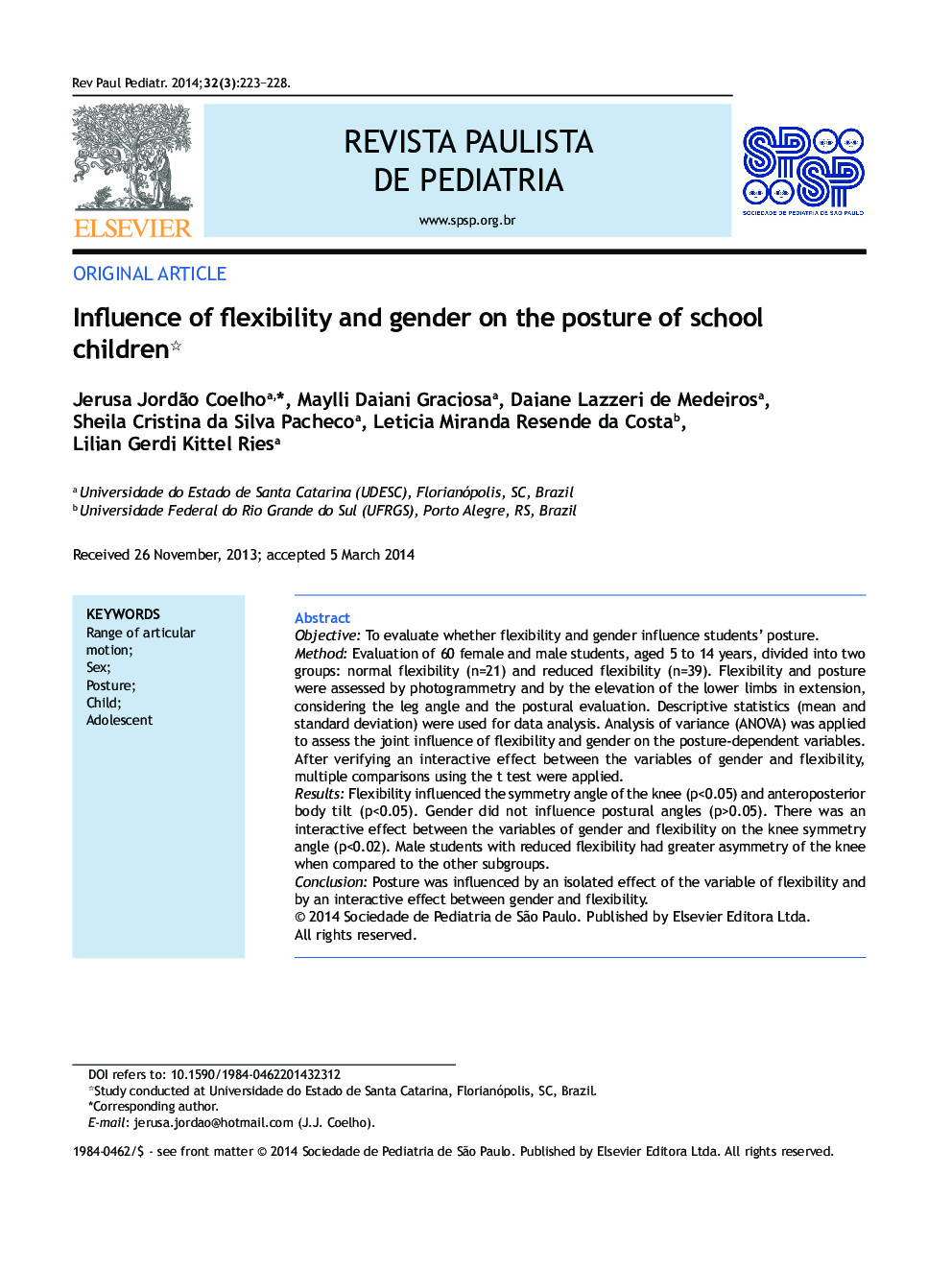| Article ID | Journal | Published Year | Pages | File Type |
|---|---|---|---|---|
| 4176221 | Revista Paulista de Pediatria (English Edition) | 2014 | 6 Pages |
ObjectiveTo evaluate whether flexibility and gender influence students' posture.MethodEvaluation of 60 female and male students, aged 5 to 14 years, divided into two groups: normal flexibility (n=21) and reduced flexibility (n=39). Flexibility and posture were assessed by photogrammetry and by the elevation of the lower limbs in extension, considering the leg angle and the postural evaluation. Descriptive statistics (mean and standard deviation) were used for data analysis. Analysis of variance (ANOVA) was applied to assess the joint influence of flexibility and gender on the posture-dependent variables. After verifying an interactive effect between the variables of gender and flexibility, multiple comparisons using the t test were applied.ResultsFlexibility influenced the symmetry angle of the knee (p<0.05) and anteroposterior body tilt (p<0.05). Gender did not influence postural angles (p>0.05). There was an interactive effect between the variables of gender and flexibility on the knee symmetry angle (p<0.02). Male students with reduced flexibility had greater asymmetry of the knee when compared to the other subgroups.ConclusionPosture was influenced by an isolated effect of the variable of flexibility and by an interactive effect between gender and flexibility.
ResumoObjetivoVerificar se a flexibilidade e o sexo exercem influência sobre a postura de escolares.MétodoForam avaliados 60 escolares de ambos os sexos, com idade entre 5 e 14 anos, divididos em dois grupos: flexibilidade normal (n=21) e flexibilidade reduzida (n=39). A flexibilidade e a postura foram avaliadas, respectivamente, por meio da fotogrametria e do teste de elevação dos membros inferiores em extensão, considerando o ângulo da perna e a avaliação postural. Para o tratamento de dados, foi feita a estatística descritiva (média e desvio padrão). A análise de variância univariada (ANOVA) foi utilizada para verificar a influência conjunta dos fatores flexibilidade e sexo nas variáveis dependentes posturais. Após verificar efeito interativo entre esses dois fatores, procederam-se as comparações múltiplas, utilizando o teste t.ResultadosA variável flexibilidade exerceu efeito sobre o ângulo de simetria do joelho (p<0,05) e da inclinação corporal ântero-posterior (p<0,05). O sexo não apresentou influência sobre os ângulos posturais (p>0,05). Houve interação entre as variáveis flexibilidade e sexo no ângulo de simetria do joelho (p<0,02). Escolares do sexo masculino e flexibilidade reduzida apresentaram maior assimetria de joelho, comparados aos outros subgrupos.ConclusãoA postura sofreu efeito isolado da variável flexibilidade e efeito interativo entre o sexo e a flexibilidade.
